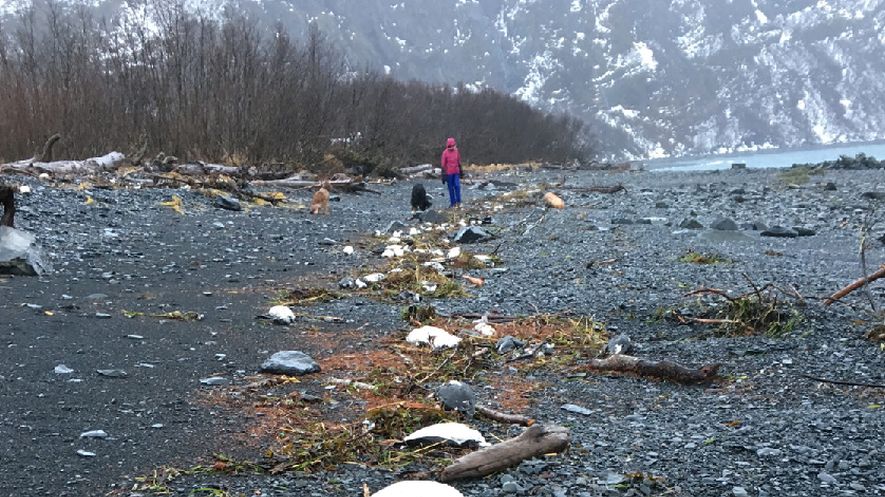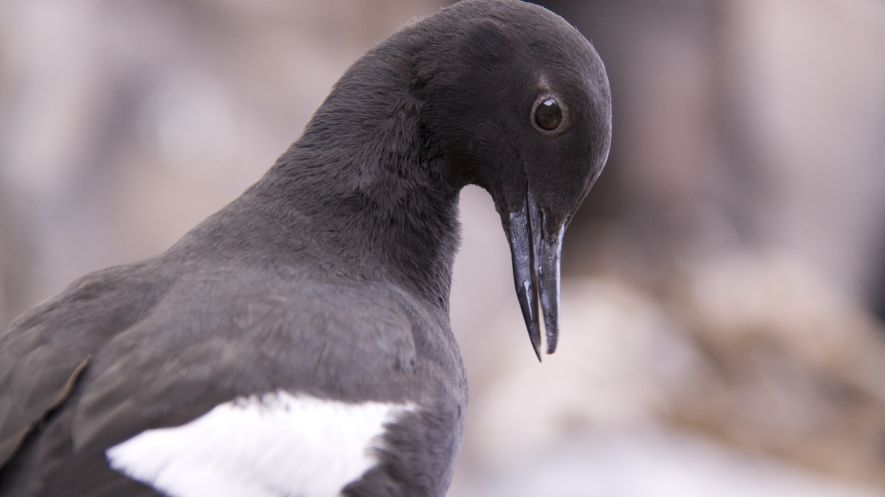Thousands of dead and dying murres have been washing up on beaches this year, from California to the Gulf of Alaska.
Dead birds were first reported in March 2015, but mortality events continued throughout the summer and increased during fall and winter. Murres normally spend the winter offshore, but instead have remained near coastal Alaska. Even more unusual, murres have turned up at inland locations this winter (including Fairbanks) and have been observed swimming and presumably foraging in openings in rivers and lakes – both of which are unusual behaviors for a seabird.
Seabirds are indicators of what is happening in the marine system. Seabird mortality events occur occasionally, especially after a hard winter, and causes are often difficult to determine. This current die-off, however, appears to be unusually large.
Dan Gibson, a Fairbanks-based avian expert told Tim Ellis of KUAC FM, said that finding seabirds 350 miles north of the coast at Fairbanks, Alaska is unparalleled.
“There’s never been a record of common murre north of the mountains, no record in the Interior before,” Gibson said.
In early January 2016, biologist David Irons found 8,000 dead birds on a one mile stretch of beach. He told CNN that. “It’s an order of magnitude larger than any records I am aware of.”
Heather Renner, a supervisory biologist at the Alaska Maritime National Wildlife Refuge estimates that 100,000 common murres have died just in Alaska.
While there are approximately 2.8 million murres in Alaska, Irons told KTVA that, "Seabird biologists say seabirds are indicators of the health of the ecosystem. Now they're dying and that is telling us something.”
Robb Kaler, a migratory expert with the U.S. Fish and Wildlife Service in Alaska, says that research gong on since the event was first recognized in 2015 has proven the birds are starving, and that they could not find enough food along the coast, but researchers have not yet found the mechanism behind it. It is possible that the event is related to warmer-than-usual ocean temperatures.
In response, the U.S. Fish and Wildlife Service is working with USGS Alaska Science Center, National Park Service, the Coastal Observation and Survey Seabird Team (COASST), the Alaska Department of Fish and Game, Alaska SeaLife Center, and the Bird Treatment and Learning Center (Bird TLC) in response to this event and to to determine the extent of this die-off.
Nearly 100 murre carcasses have been sent to the National Wildlife Health Center in Madison, Wisconsin for disease and toxicological testing. Results indicate starvation as the cause of death, likely related to warmer than usual sea-surface temperatures beginning in 2014. Additional factors include an El Niño event predicted to be more extreme than any previous El Nino event, all of which influence the distribution and abundance of cold-water prey species used by marine birds and mammals. Some beaches are being regularly walked by trained COASST citizen scientists to better document the die-offs. These surveys provide estimates of numbers of birds affected.
What Can I Do?
The US Fish and Wildlife Service cautions people against touching or collecting any sick or dead birds. Leave the birds where they are and document the die- off. If disease was a cause of death, then it is best to be safe, not handle the birds, and keep your pets away. Carcasses are a food bonanza to winter scavengers such as eagles, ravens and mammals.
Report dead seabirds by calling 1-866-527-3358 or emailing This email address is being protected from spambots. You need JavaScript enabled to view it.. Include the date & time, the exact location (latitude/longitude and length of beach), the type of bird (species name or group e.g. murre, auklet, etc.), the estimated number of birds (for each species), and photos.
To learn more about citizen science, coastal observation and seabird surveying, visit depts.washington.edu/coasst/.
Seabird die-off Photo caption: Fish and Wildlife researchers say the birds are dying of starvation. Photo courtesy of David Irons / USFWS.




